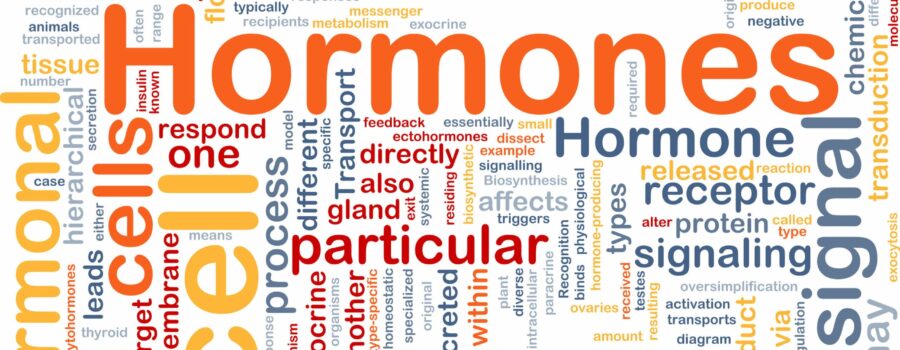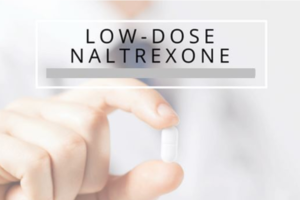Menopause marks a profound shift in a woman’s life, often accompanied by symptoms like hot flashes, mood swings, and fatigue. As the ovaries wind down their production of key hormones—estrogen, progesterone, DHEA, pregnenolone, and testosterone—it’s tempting to assume that simply “replacing” these hormones will restore balance. Hormone replacement therapy (HRT) has long been a go-to solution, but the reality is far more complex. Throwing these five hormones into a menopausal woman’s system without careful consideration can disrupt delicate physiological processes, with estrogen, in particular, posing a risk of triggering histamine reactions. Here’s why a one-size-fits-all approach to hormone supplementation can do more harm than good.
The Menopausal Hormone Decline: A Natural Transition
Menopause isn’t a disease; it’s a natural transition reflecting the body’s adaptation to a new phase of life. Estrogen and progesterone levels drop as ovarian function declines, while adrenal hormones like DHEA and pregnenolone—precursors to other sex hormones—may also wane due to stress or aging adrenals. Testosterone, though often associated with men, plays a role in women’s libido and muscle maintenance but similarly decreases over time. The temptation to replenish all five hormones simultaneously overlooks the intricate interplay between them and the body’s broader systems, including immunity, digestion, and inflammation.
While HRT can alleviate symptoms for some, flooding the body with these hormones without personalized assessment ignores individual variability. Age, genetics, lifestyle, and pre-existing conditions all influence how a woman’s body responds to supplementation. More critically, estrogen’s link to histamine dysregulation adds a layer of caution that cannot be ignored.
Estrogen and Histamine: A Volatile Connection
Estrogen doesn’t operate in isolation—it interacts with numerous systems, including the immune system, where histamine resides. Histamine, a compound best known for its role in allergies, also regulates inflammation, stomach acid production, and brain function. In women, estrogen and histamine share a bidirectional relationship: estrogen increases histamine release by stimulating mast cells (immune cells that store histamine), while histamine, in turn, can prompt the ovaries to produce more estrogen. This feedback loop is tightly regulated in pre-menopausal years, but menopause disrupts the balance.
When exogenous estrogen is introduced during menopause—especially in high or unopposed doses—it can overstimulate mast cells, leading to excessive histamine release. This manifests as symptoms like itching, hives, headaches, brain fog, or even digestive distress, often mistaken for unrelated issues. For women with undiagnosed histamine intolerance or mast cell activation syndrome (MCAS), this reaction can be amplified, turning a well-intentioned therapy into a source of misery. Unlike pre-menopause, when progesterone and other hormones help counterbalance estrogen’s effects, the menopausal body may lack the natural checks and balances to mitigate histamine spikes.
The Risks of Overloading with Progesterone, DHEA, Pregnenolone, and Testosterone
While estrogen’s histamine connection is a standout concern, indiscriminately adding progesterone, DHEA, pregnenolone, and testosterone into the mix compounds the risk. Each hormone has its own downstream effects, and without precise dosing tailored to an individual’s needs, the results can be unpredictable.
1. Progesterone: Often paired with estrogen in HRT to protect the uterus, progesterone can be calming in the right amounts. However, excessive doses—or poor timing relative to estrogen—can lead to sedation, bloating, or mood swings. Progesterone also influences histamine indirectly by modulating immune responses, and an imbalance may exacerbate inflammation in histamine-sensitive women.
2. DHEA: As a precursor to both estrogen and testosterone, DHEA supplementation aims to boost energy and libido. But overdoing it can overstimulate the adrenals, increase estrogen levels (and thus histamine), or cause androgenic side effects like acne and hair loss. Menopausal women with adrenal fatigue may fare worse, as their bodies struggle to metabolize excess DHEA.
3. Pregnenolone: Dubbed the “mother hormone,” pregnenolone is a building block for DHEA, progesterone, and other steroids. While it supports cognition and stress resilience, flooding the system with pregnenolone can lead to hormonal chaos if downstream pathways (like cortisol or estrogen production) are already dysregulated. This can indirectly fuel histamine issues via stress-induced mast cell activation.
4. Testosterone: Used to restore vitality and muscle tone, testosterone can be a double-edged sword. Too much can aromatize into estrogen, further driving histamine release, or cause unwanted virilization (e.g., voice deepening, facial hair). Its interplay with estrogen and progesterone requires careful calibration, not a blanket approach.
The Domino Effect: Systemic Imbalance
Hormones don’t act in silos—they’re part of a symphony. Introducing all five at once risks overwhelming the endocrine system, particularly in menopause when feedback loops are already shifting. The liver, responsible for metabolizing these hormones, may struggle to keep up, leading to a buildup of active compounds or their byproducts. This metabolic overload can amplify side effects, including histamine-related symptoms, as the body fails to clear excess estrogen efficiently.
Moreover, menopausal women often face coexisting conditions—thyroid dysfunction, gut dysbiosis, or chronic stress—that alter hormone metabolism. For instance, a sluggish thyroid can impair estrogen clearance, while poor gut health (common in histamine intolerance) hinders detoxification. Adding a cocktail of hormones without addressing these root causes is like pouring fuel on a smoldering fire.
A Case for Personalization Over Prescription
The pitfalls of a blanket hormone approach underscore the need for personalization. Rather than assuming every menopausal woman needs a full-spectrum HRT regimen, healthcare providers should start with comprehensive testing—blood, saliva, or urine assays—to assess baseline levels of estrogen, progesterone, DHEA, pregnenolone, and testosterone. Histamine sensitivity should also be evaluated, especially in women with a history of allergies, migraines, or unexplained rashes.
From there, a phased, low-dose strategy is wiser. For example, if estrogen is deemed necessary, bioidentical forms (chemically identical to the body’s own) in minimal doses, balanced with progesterone, may minimize histamine reactions. DHEA or pregnenolone might be introduced later, only if adrenal function warrants it. Testosterone, if indicated, should be titrated carefully to avoid aromatization. Monitoring symptoms and adjusting accordingly ensures the body isn’t overwhelmed.
Lifestyle as a Foundation
Beyond hormones, lifestyle interventions can mitigate menopausal symptoms and histamine issues without the risks of supplementation. A low-histamine diet (avoiding aged cheeses, fermented foods, and alcohol) can ease mast cell burden, while anti-inflammatory nutrients like quercetin and vitamin C stabilize histamine release. Stress management—via meditation or yoga—supports adrenal health, reducing reliance on DHEA or pregnenolone. Exercise and sleep bolster natural testosterone and progesterone production. These measures address the root of menopausal discomfort, often reducing the need for aggressive hormone therapy.
Conclusion: Caution Over Convenience
At Advanced Vitality, we view menopause as a natural recalibration—not a cue to overload your system with estrogen, progesterone, DHEA, pregnenolone, and testosterone. Estrogen’s potential to trigger histamine reactions serves as a red flag, but the bigger picture is this: hormones are potent and deserve careful handling. Our approach is precise and evidence-driven, relying on thorough testing, gradual dosing, and lifestyle guidance to ensure safe, effective relief. We’re here to help you thrive through this transition with vitality and balance. Hormonal chaos isn’t the answer—personalized precision is.







